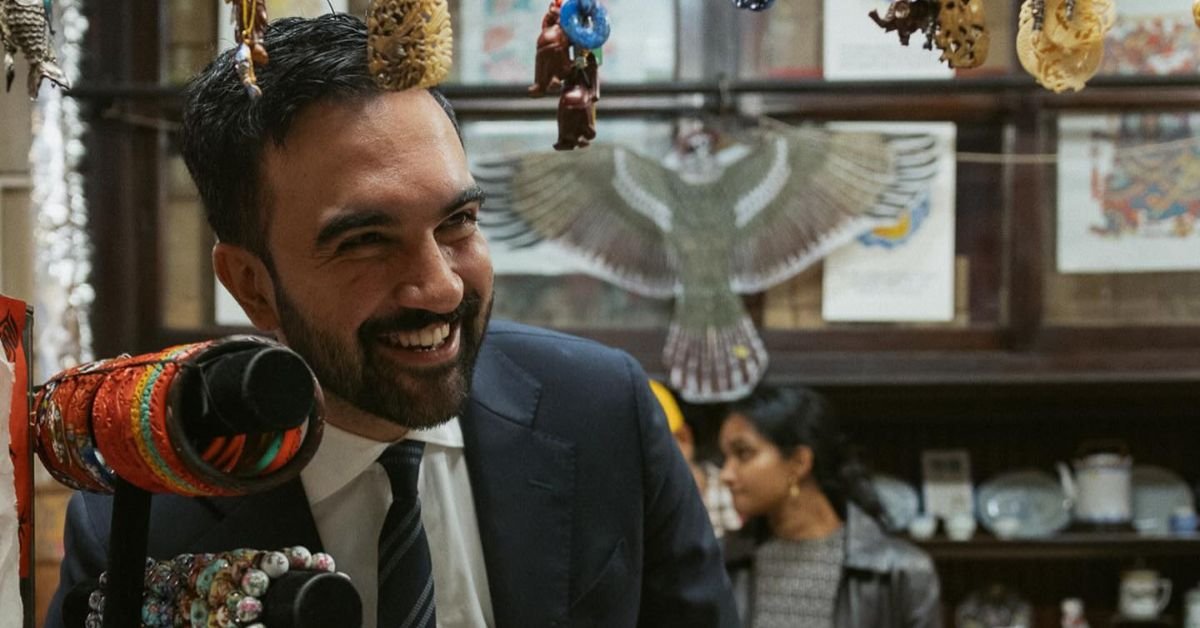Table Of Contents
Zohran Mamdani
In the heart of New York City’s vibrant political scene, Zohran Mamdani’s rise to mayor-elect has been a story of grit, vision, and widespread support.
As a democratic socialist and the first Muslim, South Asian, and African-born mayor of the Big Apple, his 2025 campaign drew in millions in donations from everyday folks and a few unexpected allies.
However, what really got people to dig into their pockets?
As a writer for THOUSIF Inc. – USA, I have sifted through the details to bring you a straightforward breakdown.
Zohran Mamdani’s Background And Relatability
Zohran Kwame Mamdani’s journey starts in Kampala, Uganda, where he was born in 1991.
His family fled political unrest and settled in Queens, New York, when he was just seven.
Growing up in a working-class immigrant neighborhood, he saw the daily battles with high rents, limited healthcare, and economic inequality.
Before politics, Mamdani worked as a foreclosure prevention counselor, helping families avoid losing their homes during tough times.
He even pursued a side gig as a rapper under the name “Mr. Cardamom,” spitting verses about identity and social issues that echoed his lived experiences.
This authentic backstory made him stand out, no silver spoon or political dynasty here.
Donors often cited this relatability as a big reason for their support, seeing him as someone who truly understands the struggles of regular New Yorkers.
Elected to the New York State Assembly in 2020, representing Astoria, Queens, Mamdani quickly became known for his progressive push.
As a member of the Democratic Socialists of America (DSA), he fought for rent controls, better public transit, and worker rights.
When he launched his mayoral bid in late 2024, his platform was built on these wins, promising a city that’s affordable and just for all.
Key Policies That Inspired Support
This resonated deeply in a place where skyrocketing costs have pushed many to the brink.
Supporters donated because they believed in his plans to freeze rents, expand free childcare, and invest in green jobs, real solutions for real problems.
His focus on affordability was not just talk; it was rooted in his own experiences as an immigrant kid in Queens.
Donors, especially young professionals and families, saw these policies as a direct way to ease their daily burdens, like high housing costs and childcare expenses.
Beyond economics, Mamdani’s commitment to climate action and social justice drew in environmentally conscious and activist donors.
He advocated for sustainable urban development, like more bike lanes and renewable energy investments, appealing to those who want New York to lead on global warming.
The Grassroots Funding Model
A huge part of Mamdani’s appeal was his grassroots funding model.
He leaned heavily on small-dollar donations, amplified by New York City’s public matching program, which turns every $10 from a resident into more through government funds.
By September 2025, he had raised so much that he stopped accepting more private money, focusing instead on his volunteer-driven campaign.
This approach motivated thousands of young professionals, students, and working families to chip in.
For them, giving was not just about money; it was about building a movement against corporate dominance.
In a city tired of big-money politics, Mamdani’s strategy felt fresh and empowering.
A Diverse Donor Base
However, the donor base was not limited to locals.
Contributions poured in from across the U.S., especially from progressive hotspots like California and Illinois.
These out-of-state givers saw his campaign as a national beacon for change, fighting inequality and climate threats.
His anti-establishment vibe, calling out cozy ties between billionaires and government, drew sharp contrasts with opponents backed by super PACs.
Interestingly, while over 26 billionaires funneled millions to stop him, two actually supported Mamdani: philanthropist Liz Simons and tech entrepreneur Preston-Werner.
Their donations highlighted alignment with his social justice and innovation goals, showing that even wealth can back bold reform when it matches values.
Academic circles played a key role, too.
Columbia University affiliates alone donated over $40,000, likely drawn by Mamdani’s education reforms and his father’s professorship there.
Unions and labor groups backed him for his pro-worker stance, like advocating fair wages and protections against exploitation.
These contributors were motivated by a shared vision of lifting the overlooked, immigrants, low-wage earners, and communities of color.
Breaking Down The Funding Numbers
To give you a clearer picture of his funding breakdown, here is a table based on campaign reports:
| Category | Contributions | Motivations |
|---|---|---|
| Small Individual Donors (under $100) | Approximately $2-3 million (including matches) | Grassroots empowerment, relatability, and affordability policies |
| Out-of-State Supporters | Over $500,000 | National progressive push, anti-corporate reforms |
| Academic Affiliates (e.g., Columbia) | $40,000+ | Education funding, intellectual diversity |
| Philanthropic/Tech Donors (e.g., Simons, Werner) | Undisclosed but significant | Social justice, climate action, innovation |
| Unions and Labor Groups | $100,000-$200,000 | Worker rights, fair wages |
| Overall Total (Private + Matches) | Nearly $4 million | Belief in equitable, people-first governance |
This data underscores how diverse motivations fueled his success.
Small donors dominated, proving that people-powered campaigns can outpace big-money machines.
Overcoming Challenges And Controversies
Even in the face of attack ads from real estate titans and financiers, who formed five super PACs to derail him, supporters stayed committed.
They saw opposition as validation that Mamdani was a real threat to the status quo. Of course, his campaign was not without hurdles.
Critics labeled him “too radical” for ideas like progressive taxes on the wealthy to fund social programs.
However, donors motivated by long-term equity viewed this as a plus.
His calls for peace in global conflicts and representation for marginalized groups especially appealed to immigrant and activist communities.
Donating became a way to amplify voices often sidelined in politics.
The Emotional and Personal Appeal
Emotionally, Mamdani’s charisma sealed the deal.
At rallies and door-knocking events, he connected personally, sharing stories from his immigrant roots.
His massive volunteer army, over 50,000 strong, turned donors into activists, creating a sense of community.
This human element motivated many who felt jaded by traditional politics.
In the end, his fundraising haul of nearly $4 million, boosted by matches, helped secure over 50% of the vote.
Conclusion
If this peek into political passion has you hooked, dive into more insights from THOUSIF Inc. – USA.
What is your take on what drives donations, policy, or personality?
Share below and let us chat!






